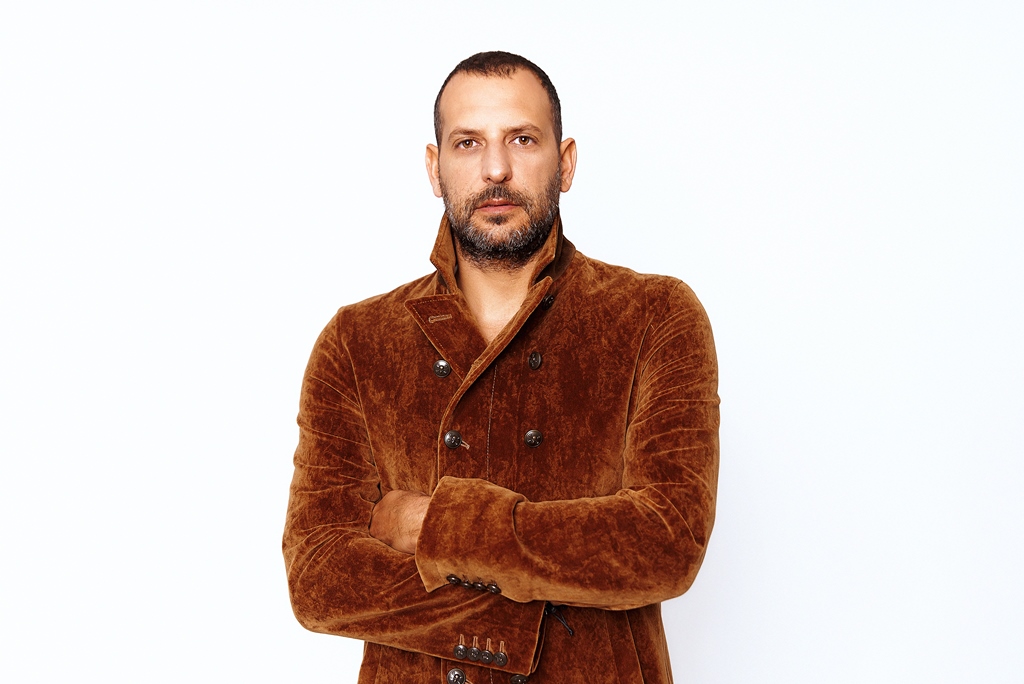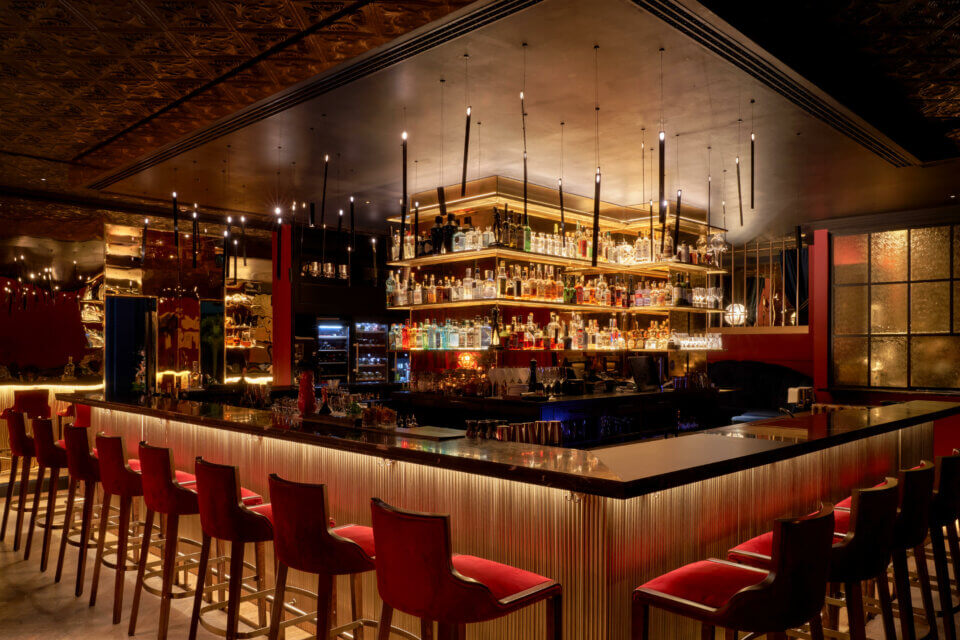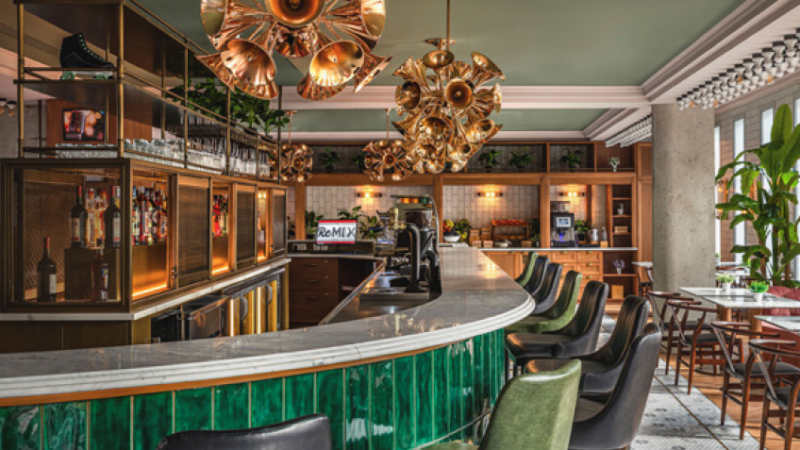"Twelve years ago, I started traveling the world. I lived in Berlin for eight months, then moved to Amsterdam. I also lived in London, returned to Israel, and today the office is located in Amsterdam." This journey is described in a conversation with Passport News by the world's most successful Israeli interior designer in the hotel industry, Saar Tsafrir.
But this conversation takes place from Israel, under very happy circumstances. At 47, Saar became a new father.
"I'm still getting used to the fact that it's not like when my niece was born, and she was returned to her parents. I can just stare at her for hours. You can feel the wonder. I'm a very older dad, but the experience is amazing."
 Designer Saar Tsafrir. Photo: Chantal Brinks
Designer Saar Tsafrir. Photo: Chantal BrinksTsafrir, a recipient of countless prestigious design awards, is considered one of the hottest names in the field, and his fatherhood project temporarily slows his pace, but as always - he is still before, during, and after designing a new hotel.
"The latest are 'Cargo' in Rome with 600 rooms, a conference hotel, and a boutique hotel with 50 rooms in Brussels, and now we also opened 550 rooms at the Autograph Collection, also in Brussels."
How different is the work between a large commercial hotel and a small boutique hotel?
"In terms of attention to detail, it's not very different. We always pay close attention to the design and the smallest details. The difference is that designing 550-600 rooms is a much longer and more tedious project."
As he mentioned, Tsafrir works along the axis between massive hotels and iconic brands and smaller hotels that allow the artist in him "to go wild" and do as he pleases.
What excites you more?
"The truth is, these days I no longer want to work with 'hard brands' that don't allow you to play. In such a case, the brand knows what it wants, and there is no leeway. So my direction is to work with 'Collection' hotels - more boutique-like and the 'White Label' that allows you to play with the design as much as possible."
And how crazy do you get when you do?
"Having creative freedom doesn't mean you have to go crazy. You still need to match the hotel, maintain a standard that is easy to clean and organize, but there are elements where you can really let loose."
Can you define your style?
"I'm a warm designer, not minimalist. My designs will always be inviting and always make you feel at home."
Sounds very Israeli to me.
"It comes from home, but still each project is a story, a script. And in the end - it's important to me that it's warm, not industrial and cold."
"The Most Beautiful is Not the Most Expensive"
In his education, Tsafrir comes from finance and economics. This greatly assists the design process, understanding the options available to the hotel. "I always look at the hotel's business plan before I tell its story. Unlike many designers who go wild and say, 'Let's make it the most expensive and craziest', I view a hotel very, very businesslike."
 Photo: Courtesy of the hotel
Photo: Courtesy of the hotelAnd yet these designs cost the hotels a fortune.
"You'd be surprised to hear that in large sections of the designs, we don't use brands today. Most furniture is manufactured in Poland or China, and that doesn't mean it's not quality. Hotels can save 20-30 percent on design expenditure this way."
Take us through your design process. How does it start? Do you learn about the area? The hotel?
"The country, the city, the neighborhood, the building, and only then do I start building the story. It's also interesting to see what is done in places that are not prime locations. We know how to do it even in less glamorous places. Take 'Provocateur.' In Berlin, for example. These places, you don't reach them by accident, it's not a street you pass by as a tourist. And yet, you create an experience there. We took a hotel in an intermediate location and turned it into a serious, known, and publicized destination, with a working restaurant, and used all the elements of the building."
How did you get it and what did it become?
"We received a one-star hotel, with horrible ceilings, lowered to save electricity. The whole story was strange to me. We started breaking the ceiling and discovered two and a half meters of coatings that hid the beauty of the building. And so, not only did we design something new, but we also restored this building historically."
You're somewhat of an archaeologist.
"Sure! I love researching. In 'Galei Kinneret' you can barely see it, but at the pool, I found a story. Real antiques were found there, a column pool. I went with a local artist from the Kinneret, replicated the elements that were there, and they're now embedded in the pool. There are 3 glass cubes telling the hotel's story."
Do clients even notice this?
"The idea is not for them to notice. The idea is to integrate the design into the project. The hotel staff should be able to explain to anyone who asks. Although it doesn't always happen. But it's important for me to say that when you tell a story or write a script or when you're an 'archaeologist' it's not necessarily for the client. It's for the hotel, the designer who will set a framework and direction. Not to deviate the hotel from a 1920s style to 2024. Also in design style. If I'm doing a hotel that tells 1920, I won't put elements from the '80s.
The full interview in the Rosh Hashanah Passport issue - click here to read the magazine
No Politics?
Tsafrir does not hide his Israeliness, not in projects, not in design language, and not in meetings with clients and colleagues worldwide. You can't ignore the fact that we are living in a very complex time, of severe war affecting work - certainly for Israelis abroad.
 Anti-Israel protest (Archive photo: SHUTTERSTOCK)
Anti-Israel protest (Archive photo: SHUTTERSTOCK)"It's very, very on the sidelines," he reassures. "Anyone with a bit of intelligence understands that maybe we're not the best, but we are definitely not to blame. And by the way, we think we're the center of the world, but we are definitely not. The world has other matters to deal with."
Have you had less pleasant experiences?
"I have a friend from Croatia whom I met at Brown Beach there. She's a celebrity with 200-300 thousand followers, an actress, singer. One day I saw on her Instagram a post comparing the situation in Gaza to the Holocaust. I'm very sensitive to these things. You can say that Israel is not okay, but to compare to the Holocaust? It's disgusting."
Did you confront her about it?
"Yes. She didn't create the post, she shared it. I messaged her 'What? Why? How are you not ashamed?' She replied that she apologized, she didn't know about this sensitivity, and has no idea what is happening between Gaza and Israel, and that's most of the cases. It was a trend, everyone shared, so did she. Unfortunately, the problem is that social networks have become the center of communication."
A few days after our conversation, Saar returned to the main office in Amsterdam, where he is already working on the next project. One eye open to Israel, in a challenging time and now with an added parental commitment, and one eye on the next project, the next big hotel fantasy.



